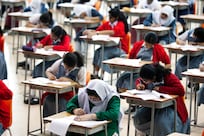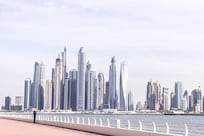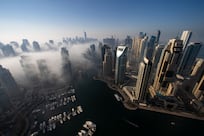Standard & Poor’s has defended its credit downgrades of five of Saudi Arabia’s biggest banks, saying that more than a year-and-a-half of lower oil prices will start to take its toll on the earnings of lenders.
The agency yesterday took the rare step of explaining the move after Saudi Arabia, the world’s biggest oil producer, criticised S&P in October following a downgrade of the kingdom’s long-term rating.
“We expect credit conditions for Saudi banks will deteriorate through a correction cycle, leading to increased non-performing loans and credit losses, as well as a decline in profitability,” wrote the analysts, led by Suha Urgan in Dubai.
“Consequently, we think that the economic risks for banks based in Saudi Arabia have increased.”
On Thursday, S&P lowered its so-called long-term counterparty credit ratings on Al Rajhi Bank, National Commercial Bank, Riyad Bank, Samba Financial Group and Saudi British Bank because of the heightened risks they face in a low oil price environment that has limited the ability of governments to spend.
That may mean these banks will find it more expensive to borrow money.
Deficits in countries in the region, including the UAE and Saudi Arabia, have widened over the past year as the steep drop in oil prices empties coffers and forces governments to dip into sovereign wealth funds and borrow more money so they can keep spending on infrastructure and social services.
Some countries have been more affected than others, according to how dependent they are on oil. At the top of the list of those reeling the most from lower oil prices is Saudi Arabia, while the UAE leads those that are least dependent.
S&P in October downgraded Saudi Arabia’s long-term rating a notch, from AA minus to A plus with “a negative outlook”, citing “a pronounced negative swing in Saudi Arabia’s fiscal balance”.
The country’s credit grade was then cut two levels to A minus from A plus in February, as the decline in oil price continued unabated – 90 per cent of Saudi Arabia’s budget is funded from the sale of crude oil.
Saudi Arabia’s ministry of finance criticised the move as “reactionary” and not based on its economic fundamentals, which include a net asset position of 100 per cent of GDP and large foreign exchange reserves.
Ratings agencies have become more aggressive after being criticised over the years for having too cosy a relationship with the institutions they rate, particularly in the wake of the 2008 financial crisis.
But Saudi Arabia’s finance ministry argued in the aftermath of the October downgrade that S&P had gone too far.
“In less than a year, the agency has gone from a positive outlook on the AA minus rating to a negative outlook on the A plus rating, on the back of changes in the global oil price dynamics,” the Saudi statement said. “We believe that S&P’s decision was not only rushed but analytically inconsistent with the idea of ratings being a medium-term tool meant to look through the cycle while assessing creditworthiness.”
Not everyone, however, thinks that all the criticism from Arabian Gulf nations about ratings agencies is fair.
Asiya Investments, a Dubai emerging market special investor, says GCC nations would do well to take heed of what ratings agencies tell them.
“The decline in oil prices has been the trigger of these revisions but doubts about the capacity of Gulf nations to implement the necessary reforms to balance their budgets are at the heart of the latest development,” said Jordi Rof, an economist at Asiya.
mkassem@thenational.ae
Follow The National's Business section on Twitter





